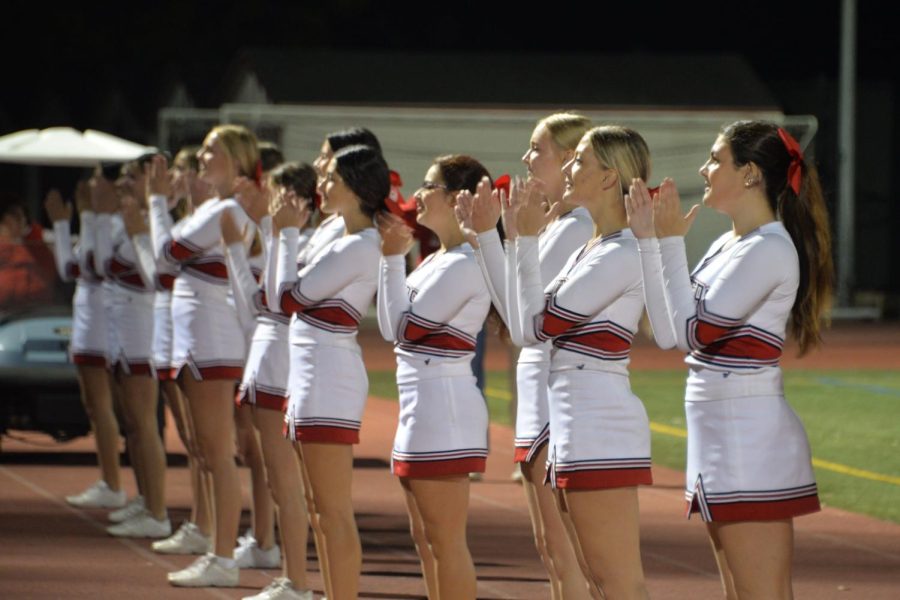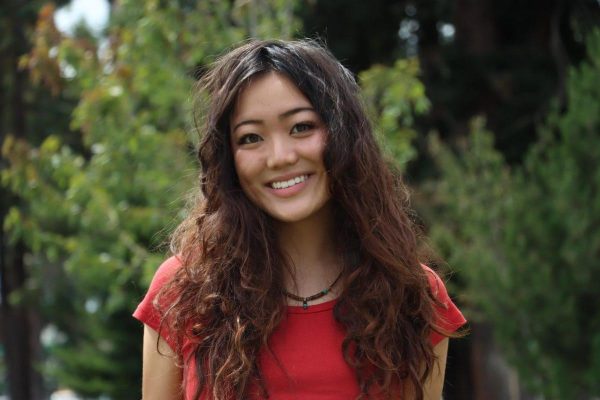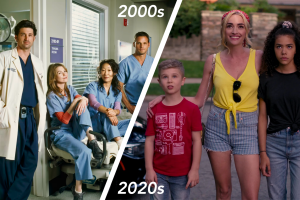The evolution of cheer: gender distribution and stereotypes
The cheer team uplifts the student section by performing engaging stunts and chants.
January 11, 2023
Picture the cheerleaders from any classic movie, television show, or young adult book: Probably, it’s a group of girls in short school dresses waving pom-poms on the football field. Likely, the cheerleaders are in the background, doing flips and reciting chants while the boys’ football team competes in the foreground.
The origins of cheer, however, are not so black and white. As the sport has evolved, it has taken on various, constraining stereotypes.
Cheerleading emerged as a male, collegiate sport in the early 1900s after medical student Johnny Campbell led a cheer at the University of Minnesota. It didn’t become a common female exercise until World War II when men were drafted into military service and forced to leave college.
Cheerleading’s male-only origins stand in contrast to today’s female-dominated demographic. Today, high school cheer stereotypes conflict with gender equality norms — including the prevalent assumption that cheer teams should be girls-only — a problem Burlingame’s cheerleaders are trying to combat.
“I think that cheer is a great sport regardless of gender,” said sophomore Jordyn Nawrocki, a junior varsity cheerleader. Even though cheerleading at Burlingame is all girls at the moment, nothing is preventing boys from participating. I believe a really strong team could have both boys and girls on it.”
At Burlingame, the squad cheers for both boys’ and girls’ sports: football in the fall and the boys’ and girls’ basketball teams in the winter. However, this inclusivity isn’t welcomed across the country. At Whitney Point High School in New York, cheerleaders quit the team after discovering they would be sent to cheer for girls’ games in 2007. The situation provoked a debate on whether cheerleading is inherently sexist.
“I understand how people could think that cheer can reinforce patriarchal stereotypes, but I honestly think that the point of view that cheer ‘isn’t a sport’ or is ‘full of mean girls’ is drowned in misogyny,” said sophomore and junior varsity cheerleader. “We put just as much work in as any other sport with only half the recognition for it.”
As a result, Lee believes that obsolete stereotypes are sexist; not the sport itself.
At the professional level, cheerleading is far more gender diverse. According to a New York University Journalism reporter, male cheerleaders represent a little over a third of the National Football League, and at least 11 NFL teams have men on their cheer squads. Nevertheless, according to Statista, out of the total 144,209 total high school cheerleaders in 2022, only 3,657 were male — less than 3%.
“I definitely wish that more boys did cheer because we’d be able to do many more stunts with the help of guys,” senior and varsity cheer co-captain Olivia Cotton said. “I think an all-girls community is amazing and has its perks since everyone is very close; however, I do not see how that would change with boys joining as well.”
While the sport may be associated with misogyny and patriarchy, boys have a harder time joining the sport that initially contained many males. The stereotype that “male cheerleaders are gay” for example, runs rampant after cheer has become a largely female sport.
“I think there is more of a stigma against boys joining high school cheer, which I wish was different,” Cotton said.
Cheerleading’s primary purpose is to spread support and positivity, but intellectual stereotypes — a common refrain is that “cheerleaders have beauty, but not brains” — can make that goal feel impossible to achieve.
“I think many stereotypes are negative, like the typical idea that all cheerleaders are pick me’s, or that they are attention seekers, or even the idea that [cheer] isn’t a sport,” freshmen JV cheerleader Natalia Cerc said. “All of us who are on the team try our hardest to support and spread positivity to everyone, so I think if people look at it that way instead of what they hear, the stereotypes would change.”
Although gender representation in cheerleading has evolved over time, the sport has always existed to support other athletes and teams. These days, many feel the sport deserves its own recognition.
“We put just as much effort as any other sport, but don’t get the same recognition,” sophomore JV cheerleader Eva Lubarsky said. “It’s a little sad when we are trying to be uplifting, but others view cheer in a negative aspect.”










































